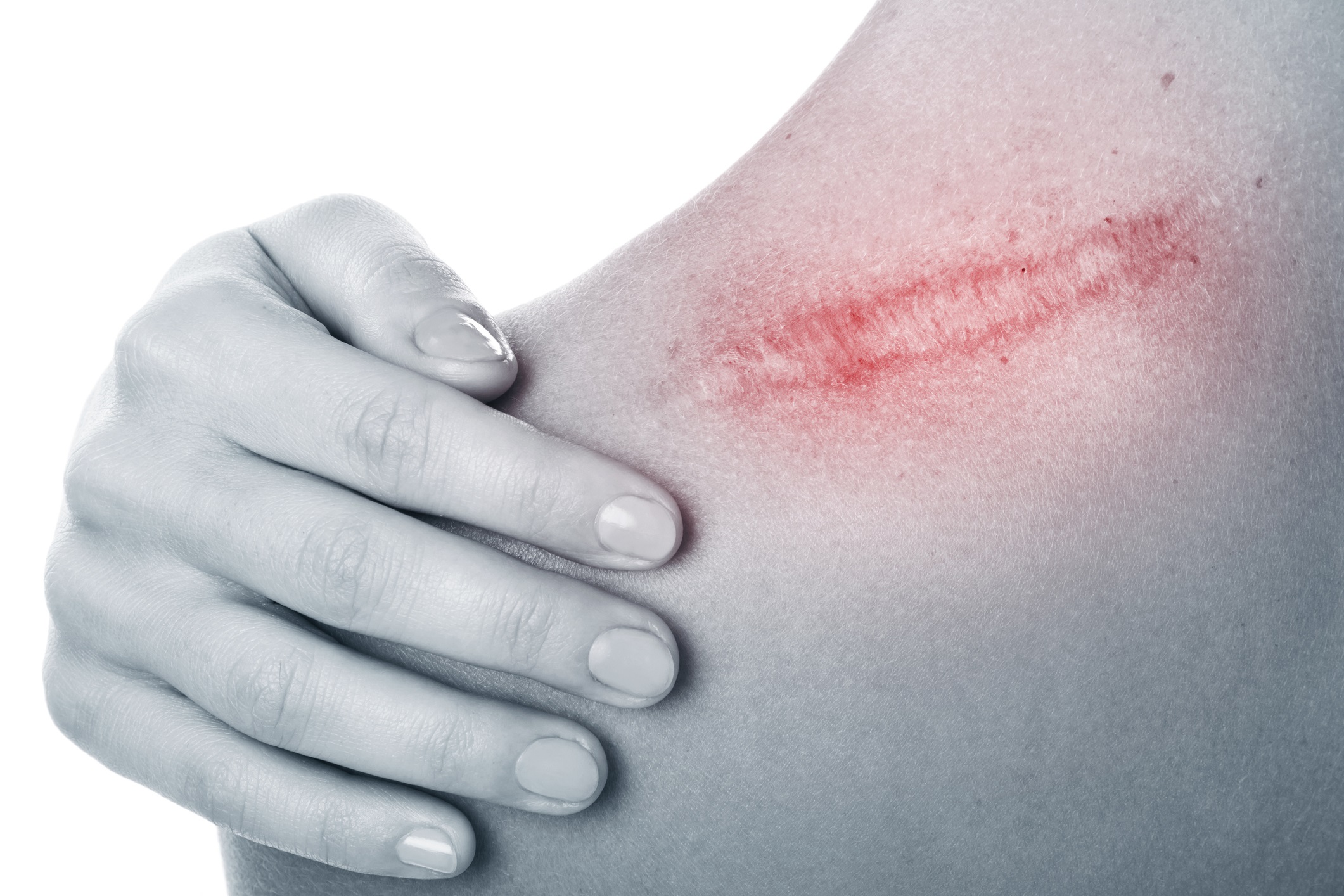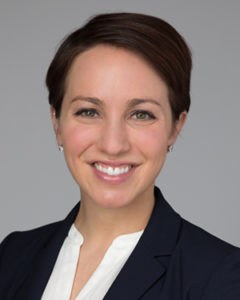by Jenna Peart
Dermatology at Boulder Medical Center
A common question from my patients is how to improve the appearance of a scar. Whether from a recent surgery or injury, there are several essential things to know about scars and a few basic things you can do to increase your chances of healing.
The Ever-Changing Nature of Scars
Wounds and the scars they form are very dynamic. Did you know that scars are constantly remodeling for over a year past the initial injury? Whatever you do or do not do for your new scar will change over time.
Initially, if you have a surgical wound with sutures, the most important thing is to ensure you take it easy for the first few weeks. Scars at two weeks after the initial surgery are only 5 percent of the strength of normal skin. Engaging in activities such as running, lifting heavy weights, and cycling can cause undue pressure on scar tissue, resulting in the opening of stitches or stretching of the incision. This can cause the wound to become larger, resulting in a more prominent scar that takes longer to heal. So, if your provider tells you to take it easy for some time after sutures, this is generally why.
In general, scars start out raised, thicker, and brighter in color. With time, they will become flatter and fade in color intensity. Diligent sun protection is one of the most critical ways to allow scars to lighten over time. This is why sunscreens are the main ingredient in many scar creams.
Scar Improvement and Treatment
What can you use on your new scars to improve their appearance? Only one thing other than sun protection has shown some evidence to help: silicone. Many products on the market contain silicone in a cream, gel, or sheet that can be applied daily once the edges of a wound have healed. I recommend using Biocorneum Scar Cream or silicone scar sheets. Many people ask about Vitamin E for scars. Data does not support that this is more helpful than moisturizing.
Is your scar very thick and raised? One way to improve this at home is by doing firm massages. Once your wound has fully healed, use firm pressure on the scar in a circular motion for 30 seconds, five times daily. This increases blood flow through the scar tissue and encourages more rapid remodeling and smoothing of the scar. In some cases, scars can become excessively thick and require more than a massage. These types of scars are known as hypertrophic or keloidal scars. If you notice that your scar is becoming more raised several months after your surgery or consistently feels tight and itchy even after it has healed, you may have developed one of these scars. See your dermatology provider for treatment in this case.
Do you feel like you don’t want to wait months or years for your scar to lighten in color? Many types of lasers on the market can assist with the texture and color of scars. For scars that are overly red or pink or have dilated blood vessels around them, a Pulse Dye Laser (PDL) or Intense Pulsed Light (IPL or a form of this known as BBL) can be used. Typically, a series of these laser treatments is needed for best results. Lasers like Nd-Yag, ablative or partially ablative fractional lasers, such as Halo, Fraxel, CO2, and Erbium, can help with scars that are irregular in contour or thickened.
The Dermatology group at Boulder Medical Center offers BBL and Halo to help improve the appearance of scars, often in combination treatments. Please note that these lasers are generally considered cosmetic, so they are not covered by insurance.
Managing Acne Scars
There are various types of acne scars, and different treatments can be effective depending on the kind and pigmentation level. One of the best long-term treatments is to use a daily prescription retinoid, such as Tretinoin or Tazorac. These won’t make a big difference daily, but over the years, they can help generate new collagen and help fade the dark marks left by pimples. They have the added benefit of being anti-aging, helping reverse sun damage, and preventing new pimples from forming. Also, acne scars can be treated with the same lasers mentioned above, typically requiring three to five or more treatments for maximum improvement. See your dermatology provider for an individualized plan.
Resources
Additional information regarding the items referenced in the article is provided below:
- Biocorneum Scar Cream — Available in the reception area in the Dermatology Department at Boulder Medical Center (BMC) at 2750 Broadway in Boulder
- BBL and Halo Laser Treatments
About Jenna Peart, MD
Dermatology at Boulder Medical Center
Dr. Jenna Peart is certified by the American Academy of Dermatology. As a dermatologist, Dr. Peart is motivated by the rewarding experience of witnessing significant improvements in her patients’ skin conditions. She understands the positive impact this has on their self-confidence and overall quality of life.
Learn more:
- Dr. Peart’s Full Profile
- Call to make an appointment: (303) 440-3013


